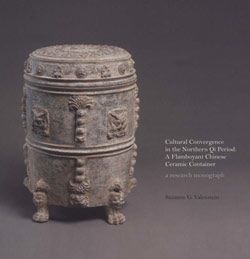Pilgrim’s flask with Central Asian dancers
Both the shape and decoration show foreign influence: the shape is based on a West Asian pilgrim’s flask, while the whirling dancer is performing a dance derived from the culture of Sogdia. Centered in present-day Uzbekistan, merchants from this polity, some of whom lived in China, dominated the Silk Road trade from the fourth to the seventh century.
This image cannot be enlarged, viewed at full screen, or downloaded.


